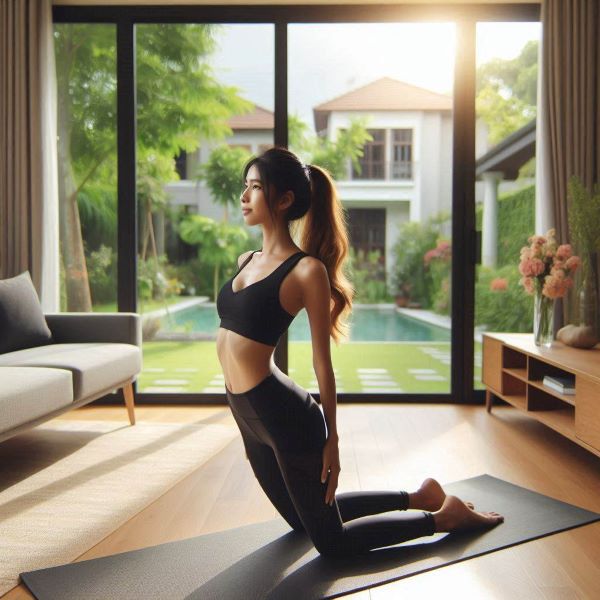Ustrasana, known in English as the Camel Pose, is a deep backbend yoga posture that stretches the entire front of the body, enhances spinal flexibility, and stimulates the nervous system. This pose resembles a camel’s hump, hence the name. Ustrasana is a powerful heart opener and a staple in many yoga practices for its ability to invigorate and energize the body.
History
Ustrasana is rooted in traditional Hatha Yoga and has been practiced for centuries to promote physical and mental well-being. The name “Ustrasana” comes from the Sanskrit words “Ustra” (camel) and “Asana” (pose). This posture is depicted in ancient yogic texts and is known for its profound benefits on the body and mind, particularly in enhancing flexibility and opening the heart chakra.
How to Do Ustrasana
To perform Ustrasana correctly, follow these steps:
- Starting Position: Kneel on the yoga mat with your knees hip-width apart and your thighs perpendicular to the floor. Place your hands on your hips.
- Prepare the Body: Ensure your shins and tops of the feet are pressing firmly into the mat. Keep your chest lifted and engage your core muscles.
- Hand Placement: Place your hands on your lower back with your fingers pointing downward, supporting your lower spine.
- Inhale and Lift: Inhale and gently press your hips forward while lifting your chest upward. Begin to arch your back.
- Reach for the Heels: One at a time, reach your hands back to grasp your heels. If you cannot reach your heels, you can keep your hands on your lower back for support.
- Deepen the Pose: Allow your head to drop back gently, opening your throat. Ensure your chest is lifted, and your hips are pressing forward.
- Hold the Pose: Hold the pose for 15-30 seconds, breathing deeply and evenly. Focus on keeping your thighs perpendicular to the floor and maintaining the arch in your back.
- Release the Pose: To come out of the pose, bring your hands back to your hips. Inhale and lift your torso, bringing your head up last. Sit back on your heels and rest.
Health Benefits
Regular practice of Ustrasana offers numerous health benefits, including:
- Improving Flexibility: Enhances the flexibility of the spine and opens the chest, shoulders, and abdomen.
- Strengthening Muscles: Strengthens the back, shoulders, and arms.
- Stimulating Organs: Stimulates the abdominal organs, aiding in digestion and improving overall gut health.
- Relieving Stress: Opens the heart and improves lung capacity, helping to relieve stress and anxiety.
- Enhancing Posture: Improves posture by counteracting the effects of prolonged sitting and slouching.
Who Should Do Ustrasana
Ustrasana is beneficial for most individuals, especially those who:
- Seek to improve their spinal flexibility and strength.
- Want to relieve stress and open their chest and lungs.
- Experience mild back or neck tension.
- Are looking to integrate a deep backbend into their yoga practice.
Also, read: Quickly Learn all about Padahastasana- Hand-to-Foot Pose
Who Should Not Do Ustrasana
Certain individuals should take precautions or avoid practicing Ustrasana:
- Those with severe back or neck injuries.
- Individuals with high or low blood pressure should avoid this pose or practice it with caution.
- Pregnant women should avoid deep backbends.
- People with migraines or insomnia may need to avoid this pose.
Precautions to Take
When practicing Ustrasana, keep these precautions in mind:
- Avoid overextending your neck; let your head drop back naturally.
- Do not push your hips too far forward; keep your thighs perpendicular to the floor.
- Engage your core muscles to support your lower back and maintain stability.
- If you experience dizziness or discomfort, come out of the pose and rest.
- Use props like blocks or place your hands on your lower back if you cannot reach your heels.
References and Sources
By incorporating Ustrasana into your regular yoga practice, you can enjoy its numerous benefits while enhancing your flexibility, strength, and mental clarity. Always practice mindfully and consult with a yoga instructor if you have any health concerns.





